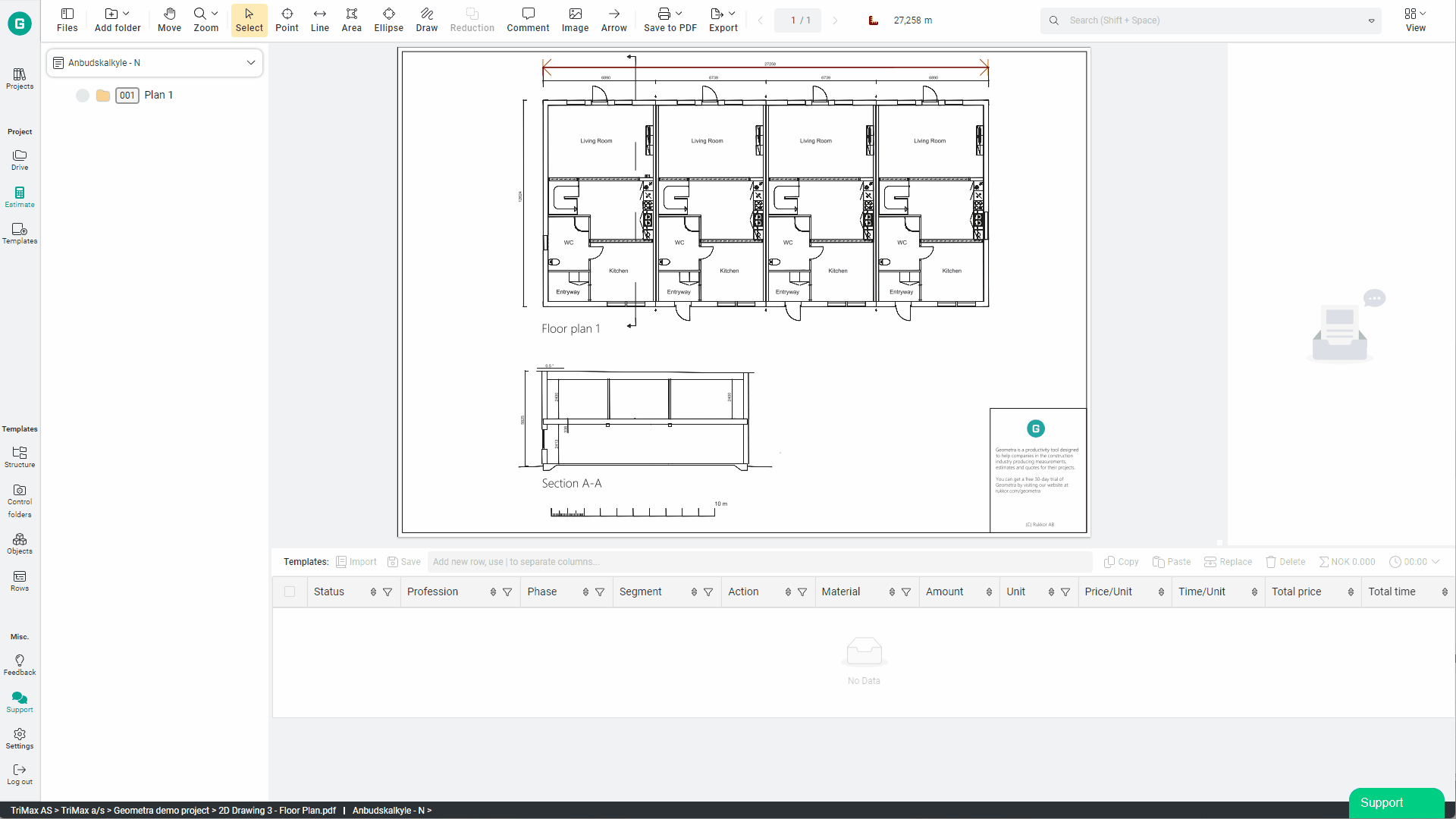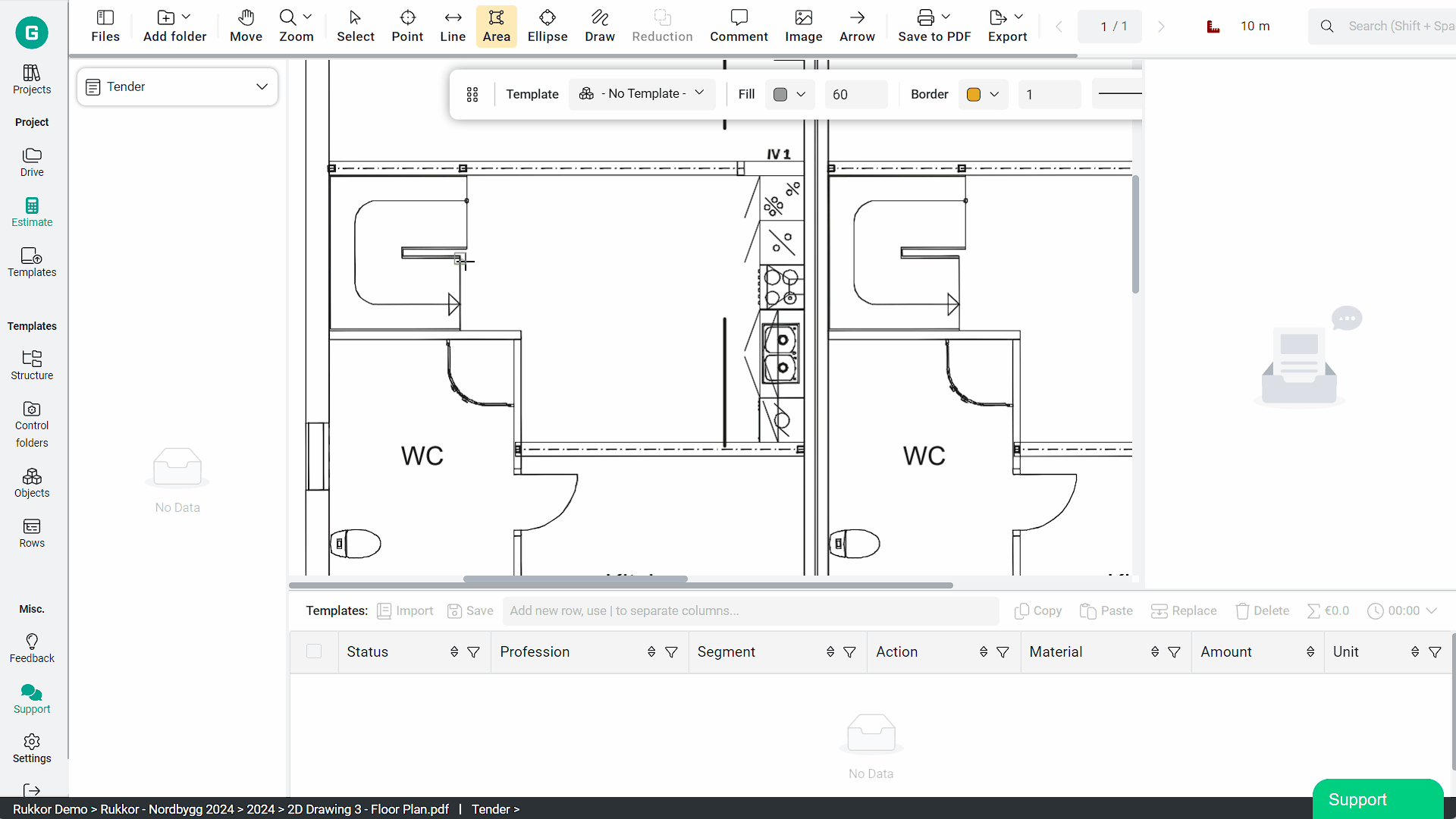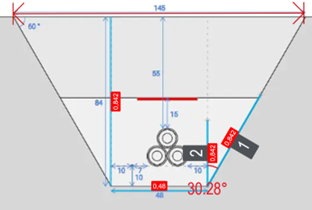Rows
In this section, we go through rows, where you convert your measurement values into quantities. It is the place where the "magic" of Geometra happens.
What are rows, and how do they work?
<div class="version-tag">v5.0</div>
You use rows to transform the measurement values obtained into detailed quantity items. Rows also allow you to use a placed object for more than one purpose.
Rows in Geometra are your key to performing advanced calculations and compilations with speed and efficiency. This is where you can swiftly convert your measurement values into quantities. For instance, you can define the amount of material (excavation mass) you need and link it to a measurement value, net volume. In a few simple steps, you've transformed a measurement value into a relevant quantity item.

Columns and Information
<div class="version-tag">v5.0</div>
There are several columns to fill with information to create the level of detail in your quantity takeoffs that you need. You can choose which columns to use yourself. You can turn off the columns irrelevant to your area of use in the program settings.
Columns in rows:
Status: Not started, In progress, Review or Completed
Profession: Who will perform the work
Phase: Which stage in the project
Segment: Can be a wall, a floor, or a part of a ceiling
Action: Type of work to be performed
Material: Type of material or surface layer
Amount: The quantity of material calculated based on your values
Unit: The unit intended. Meters, square meters, etc.
Price/Unit: Price per unit
Time/Unit: Time consumption per unit
Total price: Calculated total price for the row
Total time: Calculated total time for the row

Connect Measurement Values
<div class="version-tag">v5.0</div>
Once you place an object, you can see its measurement values in its properties. Next to most measurement values, there is a variable that you can use. To create a dynamic link of the measurement value to the row, simply select the variable and apply it. This dynamic link, established through the use of a variable, is crucial for maintaining the function of your drawings, especially when you need to change the object's size or the drawing's scale. The quantity of the row is automatically recalculated using this link. We recommend always using variables to the greatest extent possible to ensure this function remains intact. This is particularly beneficial when revising drawings.
*An object can be a room, a wall, a door, or any other object you measure or count.
Here is how it works: In the "Amount" column, you enter the desired variable, for example, NA for Net Area. You see the formula in the quantity field when you are there, and when you move away from the field, the value is calculated and displayed. You can also input mathematical expressions or formulas in the amount field while using the variables from the measurement values of the object.

Formulas
<div class="version-tag">v5.0</div>
In the Amount field, you can use mathematical expressions and advanced equations to calculate the quantity you need based on the measurement values.
A simple example of this could be dividing four walls in a room where three of the walls are to be painted, and one is to have wallpaper. In this case, you would write, for example, "NA - W1," which means taking the Net Area and subtracting Wall 1. Alternatively, you could write "W2 + W3 + W4," which would yield the same result by summing Wall 2, 3, and 4.
Round results in your formulas
Example: ceil(l/2.5)
An advanced example for calculating the mass in pipe trenches during roadworks looks like the following when the length of the trench has been measured: The example involves 2 350mm pipes. The trench is 1.5m deep and 1.2m wide, and we measure the length of the trench to be excavated.
Formula: ((((1,2*h)+(sqrt((h/cos(30))^2-(h^2))*h)))-((0,15*0,15*pi)*2))*l

Replace and Substitute Rows
<div class="version-tag">v5.0</div>
You can replace rows. Select the rows you want to replace on the selected objects and press "Replace." You will then see a window displaying your row templates. Choose which rows you want to insert, and once the selection is made, you will receive a dialogue box showing the rows you have chosen and what they will be replaced with. This action cannot be undone, so please be attentive! You can also replace an object with an object template. It gives you a predetermined appearance and ready-made lines that apply to the object.

Use Templates
<div class="version-tag">v5.0</div>
Working with many details can feel cumbersome; therefore, row templates facilitate quickly entering all the information you need on your objects. Using templates for rows not only speeds up the assignment of measurement value -> quantity but also standardizes the workflow, thereby reducing the risk of human error (such as incorrect input).
Read more about templates under the topic Templates.

.svg)
.svg)